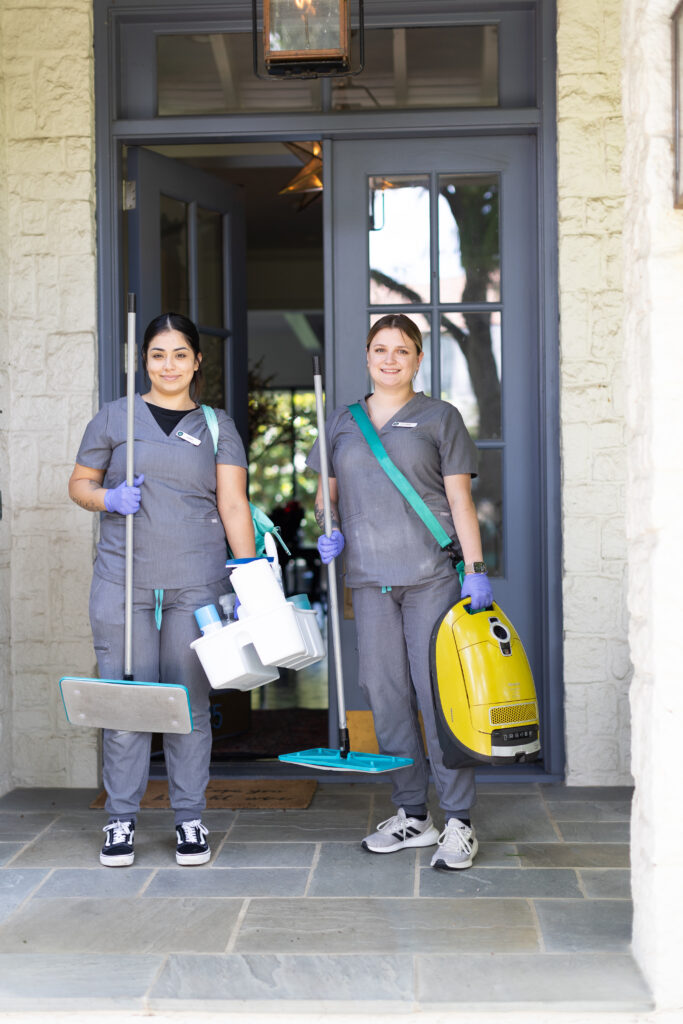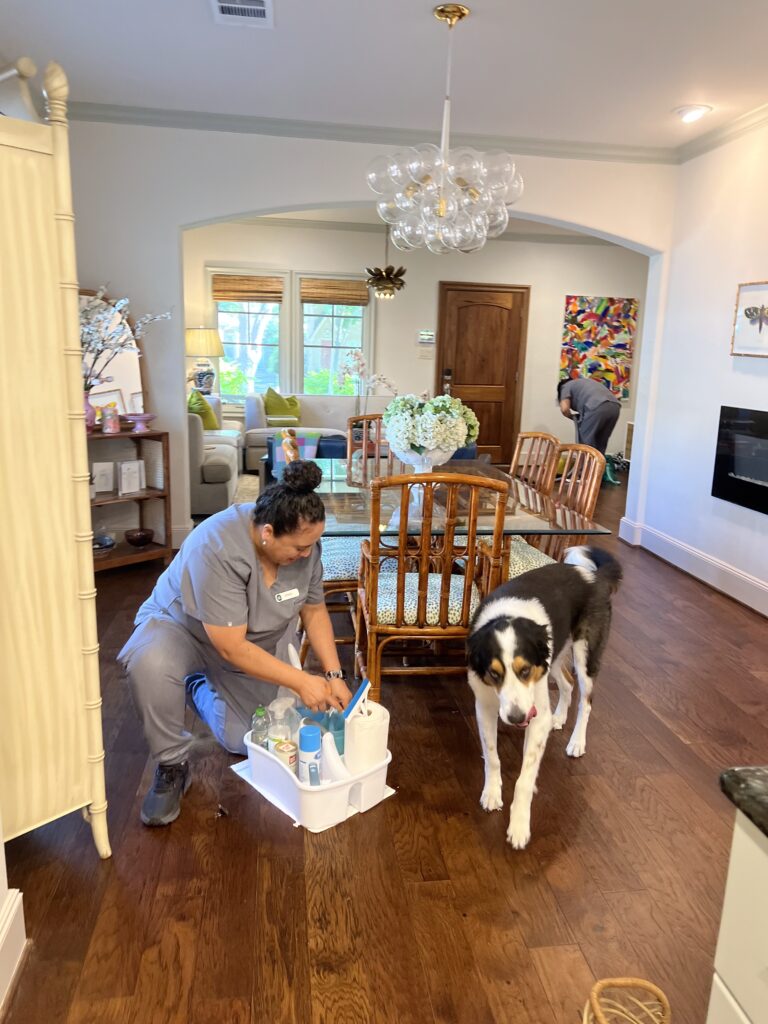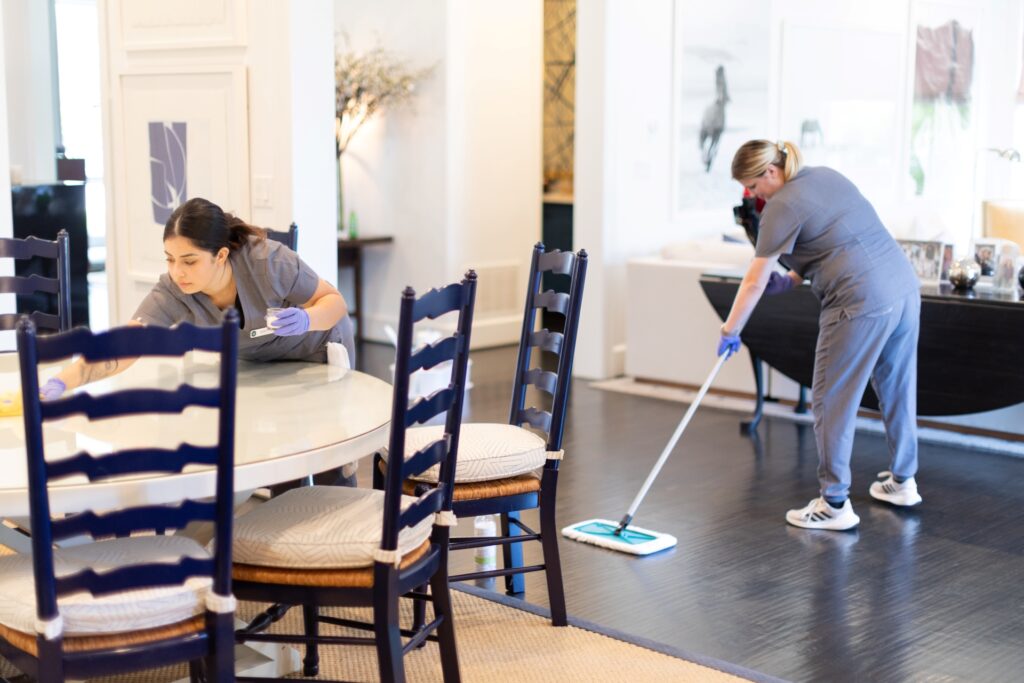Eco-Friendly Upholstery & Wood Furniture Cleaning Tips for Fort Worth Homes

Living in Fort Worth entails dealing with more than just Texas heat. The dry wind brings dust, pet dander, sticky humidity, and those lovely spring clouds of pollen; it all winds up on your furniture. And, if you’re anything like us, you’re constantly trying to figure out how to clean furniture without having your head shrunk in the house of a million harsh-smelling chemicals.
We believe that a home should be clean, fresh, and healthy without compromising on safety or sustainability. Here’s our go-to guide for eco-friendly furniture cleaning tips for Fort Worth homes just like yours.
Why Choose Eco-Friendly Cleaning?
If you have kids, pets, or just a sensitive nose, making the switch to green cleaning isn’t a trend; it’s a must. Traditional cleaning products are full of chemicals that can cause allergies, dry out skin, and make the air in your house toxic.
Harsh Cleaners:
- Contain ammonia, chlorine, and artificial fragrances
- Release strong VOCs (Volatile Organic Compounds)
- Toxic to the environment
- May damage furniture over time
Eco-Friendly Alternatives:
- Made with plant extracts and essential oils
- Safe for kids and pets
- Biodegradable and low-toxicity
- Gentle on finishes and fabrics
At Vella, we use products such as Branch Basics, Seventh Generation Dish Soap, and Bon Ami, which are strong against grime but safe for you and your space.
Material-Specific Cleaning Guides
Every material type of furniture has a little different strategy to use, particularly if you want to clean furniture both safely and effectively.
Wood Furniture
Fort Worth’s changing humidity can cause wood to swell, crack, or warp if not maintained properly. To keep yours in top shape:
- Dry dust weekly with a microfiber cloth
- Wipe with a damp cloth and a few drops of mild soap (we like Branch Basics)
- Dry out quickly to avoid damage from moisture
- Condition once a month with a natural oil or an eco-friendly wood polish
Don’t spray it directly on the wood; always apply it to the cloth first.
Upholstered Furniture
From popcorn butter to pet hair, our chairs and sofas witness it all. Here’s how to handle safe cleaning of upholstery in Texas:
- Weekly vacuum with a HEPA-filter vacuum such as our go-to Miele Complete C3.
- Spot-clean spills using a combination of Seventh Generation Dish Soap and warm water.
- For pet stains, dab with an enzyme cleaner and blot dry.
- Air dry thoroughly – never use heat to speed up drying.
Struggling to get those cushions back to life? Our Fort Worth housekeeping services include detailed upholstery vacuuming with expert tools.
Leather & Faux leather
- Wipe it down once a week with a damp microfiber cloth.
- Apply the conditioner once every 3-4 months, which is made eco-friendly.
- Avoid direct sunlight, as it could cause either cracking or fading.
If over-conditioned, faux leather will start ageing rather quickly, so only give it a light touch.
Glass & Metal Accents
Fingerprints, dust, and grime adhere to glass and metal. Here’s our DIY trick:
- Mix equal parts water and vinegar + a drop of Seventh Generation Dish Soap.
- Spray and buff right away with a clean microfiber cloth to avoid streaks.
Or, skip the DIY and use our go-to: Sprayway Glass Cleaner, streak-free and ammonia-free.
DIY Stain + Odor Removal Tips (Local Scenarios)

Pet Accidents
When dealing with pet oopsies on your furniture, quick action is key. Start by blotting the problem area with a clean cloth; do not rub, as that’s just going to spread the issue further in the fiber. Next, apply an enzyme cleaner (remember, no bleach because it will damage the fabric and make stains worse).
Once the cleaner is applied to the area, wait 10-15 minutes because the time is needed for odor removal, and then blot. Finally, rinse again with a water-and-vinegar solution to help counteract any remaining odours and refresh the furniture.
Grease from Tex-Mex Dinners
Tex-Mex nights are a favorite, but that queso splashes on the couch? Not so much. To clean greasy food stains, sprinkle baking soda over the area and let it sit for 20 minutes to soak up the soil. Then vacuum it up thoroughly. Follow up by applying a mild dish solution and warm water with a soft-bristled brush. This will lift out the last of the grease without damaging the fabric.
Fort Worth Pollen Buildup
Fort Worth spring storms can bring rain, but they also leave behind heavy pollen. To keep your furniture pollen-free, vacuum upholstery regularly, particularly during peak pollen months. For wood and glass surfaces, clean them with a damp microfiber. With high-performance vacuums such as Miele or Sanitaire, which we offer in our standard clean kits, you can significantly diminish the allergen buildup.
We recently restored a Fort Worth customer’s sectional after a storm coated it in yellow pollen. After a detailed vacuuming and spot-cleaning, it looked brand new, and they could once again breathe a sigh of relief.
Fort Worth Homeowner Tips

Want to keep your furniture looking new longer? Adopt these habits:
- Weekly cleaning: vacuuming, dusting, and spot cleaning the high-use areas.
- Seasonal deep cleaning: conditioning the wood and leather, wiping down cushion covers.
- Rotate the cushions monthly for even wear.
- Prevent water rings with coasters and trays.
FAQ Section
How soon can I sit after cleaning?
Most surfaces are safe after they’ve air-dried, which is usually 1-2 hours. Leather and upholstery may take longer.
Are eco cleaners safe for kids/pets?
Yes! We recommend cleaners like Branch Basics and Bon Ami. Both are non-toxic and child-safe.
When should I hire Vella?
If you are struggling with deep stains, strong odors, allergens, or simply don’t want to deal with it, book a Vella clean. We handle detailed upholstery vacuuming and eco-safe care.
When to Call Vella
We’re proud to provide in-depth upholstery vacuuming, move-in and move-out deep cleanings, and eco-friendly home cleaning tailored to Fort Worth families. All of our procedures are pet-friendly, kid-friendly, and Texas-approved.
We have seen it all and can clean anything without harsh chemicals. Bordering on a cleaner home and a healthier home? Book here.